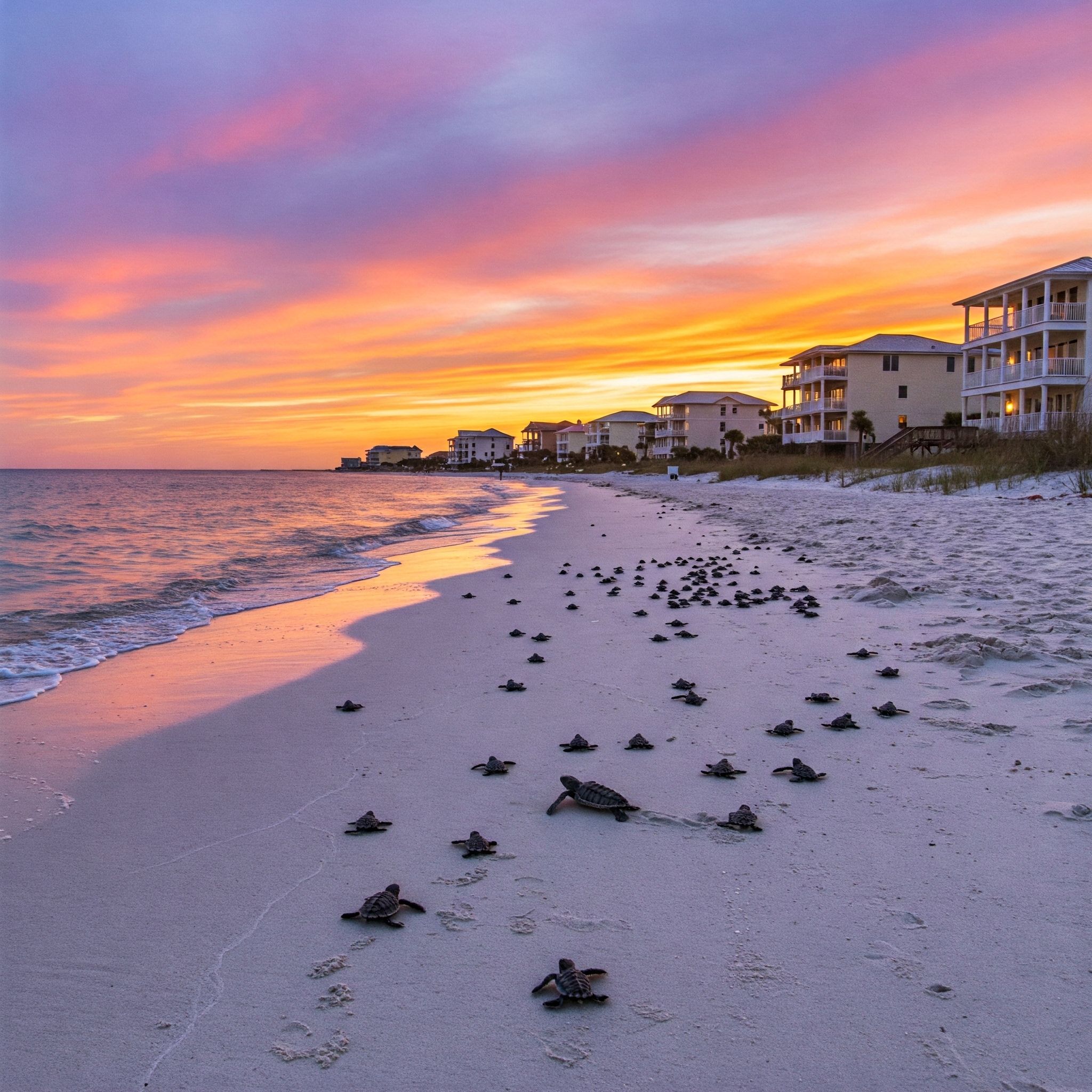
 Collin Goodwin
Collin GoodwinWhy Does Florida Have Turtle-Friendly Window and Door Requirements?
Every year, Florida’s pristine beaches become the nesting grounds for thousands of sea turtles. From May through October, these turtles emerge from the Gulf of Mexico and Atlantic Ocean to lay their eggs on the sandy shores. Hatchlings instinctively move toward the brightest horizon—which, naturally, is the open sea reflecting moonlight and starlight. Unfortunately, artificial lighting from coastal homes can disorient these young turtles, leading them away from the ocean and putting them at serious risk.
To protect this delicate balance, Florida has implemented stringent "turtle code" regulations to minimize artificial lighting from homes and buildings near turtle nesting beaches. Specifically, windows and doors must meet certain visible light transmittance (VLT) requirements. But what exactly does this mean, and how can homeowners and contractors ensure compliance?
In this guide, we'll break down Florida’s statewide turtle-friendly glazing requirements, explain why these rules are essential for wildlife protection, and explore the technology and methods contractors use to achieve compliance.
Understanding Florida’s Statewide Turtle Code
According to the Florida Building Code, specifically Section 3109, windows, doors, and other glazing within direct view (line-of-sight) of sea turtle nesting beaches must have tinted glass with a visible light transmittance (VLT) of 45% or less. The critical factor here isn't distance—it's visibility. If interior lighting from your property is visible from the nesting area, your glazing must meet these standards (Florida Building Code, Section 3109).
The Florida Fish and Wildlife Conservation Commission (FWC) supports this by emphasizing the importance of low-transmittance glazing to protect nesting turtles and hatchlings (FWC Sea Turtle Lighting Guidelines).
Why is Visible Light Transmittance Dangerous for Wildlife?
Sea turtle hatchlings have evolved to follow the brightest horizon, typically the ocean illuminated by natural moonlight. Artificial lights from coastal homes can cause hatchlings to move inland instead, making them vulnerable to predators, dehydration, and roadways. By reducing the amount of visible light that passes through windows and doors, turtle-friendly glazing helps mitigate this issue, guiding hatchlings safely toward the ocean.
Technologies to Achieve Turtle-Friendly Compliance
Low-E Glass Coatings
Low-emissivity (Low-E) glass coatings are advanced layers applied to glass surfaces that reflect infrared and ultraviolet light while allowing some visible light through. This technology significantly reduces the visible light transmittance, helping homes achieve compliance with turtle code regulations. Low-E coatings also offer additional benefits, such as improved energy efficiency and enhanced interior comfort.
Low-E coatings come in various tints and colors—such as gray, green, and blue—which further reduce visible light transmittance. These coatings can be combined strategically to achieve desired aesthetics and performance.
Tinted Glass
Tinted glass incorporates colorants directly into the glass manufacturing process, reducing visible light transmission and glare. Common tint colors include gray, green, and bronze. These tints help ensure your glazing meets the required 45% or lower VLT threshold.
Combining Low-E and Tinted Glass
Often, to achieve optimal turtle-friendly compliance, window manufacturers use both tinted glass and Low-E coatings. This combination significantly reduces VLT, enhancing wildlife safety and providing energy savings. The specific combination used can be tailored to client preferences, balancing aesthetics and compliance.
Practical Application for Homeowners
When installing new windows or replacing existing glazing near turtle nesting beaches, ensure:
- Compliance with the 45% VLT threshold: Always confirm the product specifications provided by manufacturers.
- Consultation with professionals: Work closely with your window and door contractor to choose the best combination of tinted and Low-E glass based on your home's location, orientation, and aesthetic preferences.
- Consider interior lighting: Even compliant glass can sometimes reveal bright interior lights. Incorporating window coverings or using turtle-friendly amber or red indoor lighting can further enhance compliance and wildlife protection.
County-Specific Regulations Example: Walton County
While state guidelines focus primarily on visibility, certain counties implement stricter local ordinances. Walton County, for example, establishes a specific 750-foot coastal "Wildlife Conservation Zone." Within this zone, every window and door must use glazing with a VLT of 45% or less, regardless of orientation (Walton County Wildlife Lighting Ordinance No 2009-03). This fixed-boundary approach simplifies compliance enforcement and ensures uniform protection for sea turtles.
Permitting and Enforcement
When applying for building permits, homeowners and contractors must demonstrate compliance with these glazing standards. Walton County and similar jurisdictions require documented proof of compliant glazing specifications from manufacturers. Non-compliance can lead to permitting delays, fines, or forced retrofitting.
Key Takeaways for Homeowners and Contractors
- Visibility determines compliance: Any window or door visible from turtle nesting beaches must have ≤45% VLT glazing.
- Technology solutions: Employ Low-E coatings, tinted glass, or a combination of both.
- Local regulations: Be aware of additional local ordinances, such as Walton County’s 750-foot Wildlife Conservation Zone.
- Documentation: Maintain accurate documentation from manufacturers verifying compliance for smooth permitting.
By following these comprehensive guidelines and utilizing the right glazing technologies, homeowners and contractors play a critical role in protecting Florida's beloved sea turtles. Beyond compliance, adopting turtle-friendly glazing demonstrates responsible stewardship and contributes to preserving Florida's unique coastal environment for future generations.